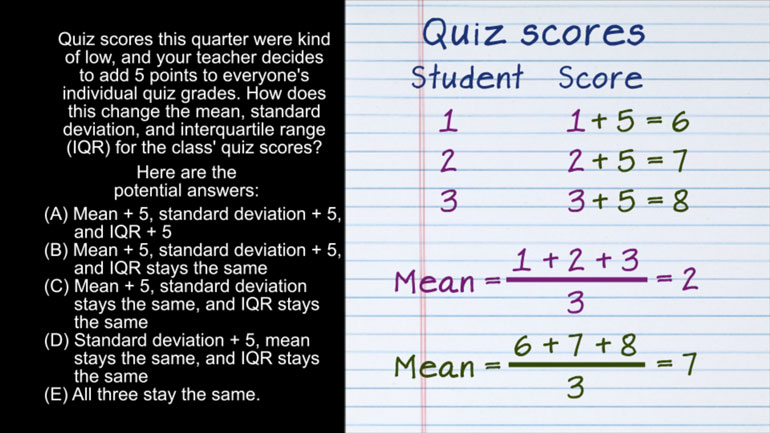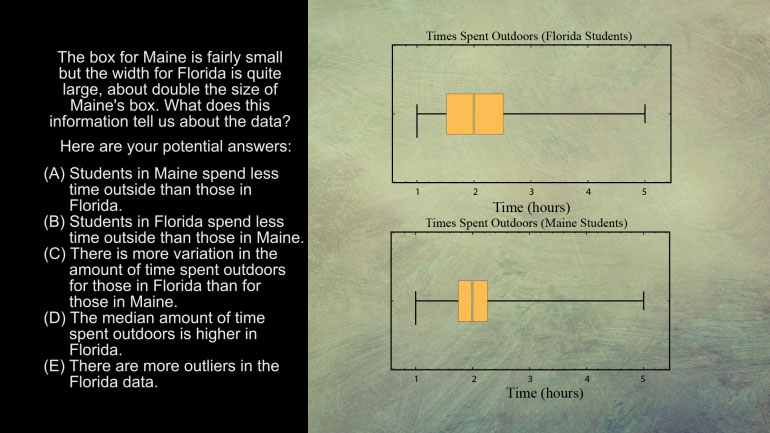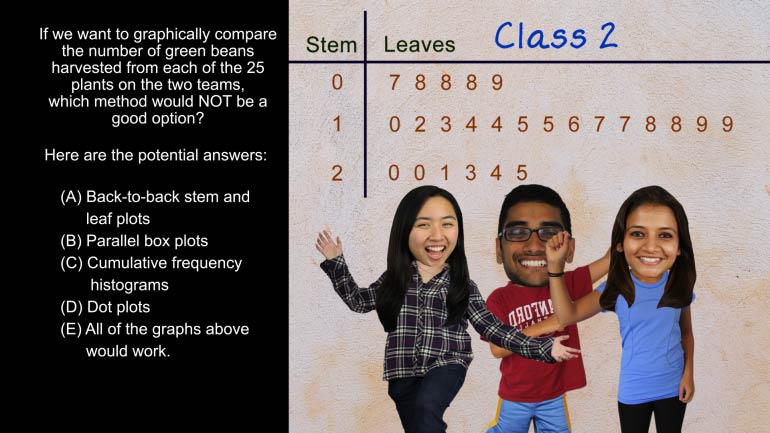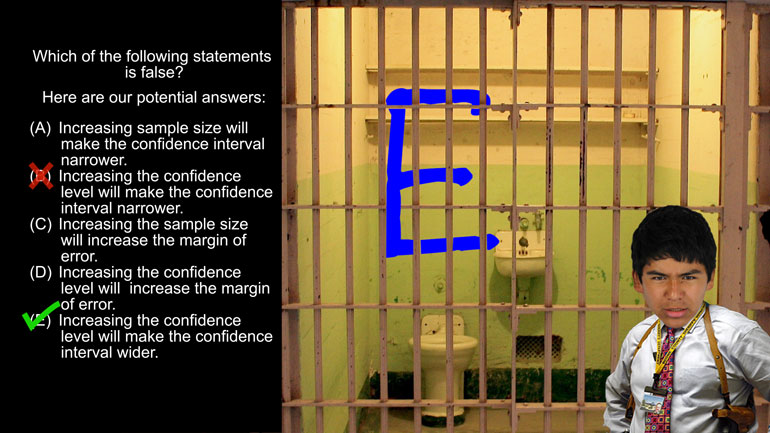ShmoopTube
Where Monty Python meets your 10th grade teacher.
Search Thousands of Shmoop Videos
AP Statistics 3.4 Exploring Data 9 Views
Share It!
Description:
AP Statistics 3.4 Exploring Data. Which of the following does not help us measure the spread of a set of data?
Transcript
- 00:04
And here's your shmoop du jour brought to you by a range like
- 00:08
Bruno Mars you may want to be careful if is too hot which of the following does [Bruno Mars singing and flames appear from his face]
- 00:13
not help us measure the spread of a set of data and here are the potential answers....
- 00:20
All right hey data feel free to spread out make yourself
- 00:24
comfortable well not that comfortable ..Anyway this problem gives
Full Transcript
- 00:28
us five options and wants to know which won't help us determine the spread of [Man spreading butter onto a piece of bread]
- 00:33
data so one of them won't give us any indication of the highs and lows of a
- 00:37
set of values and we want to nail the guilty party...Well let's take a look at [Graph with lots of data plots in an interrogation room]
- 00:42
interquartile range first of all well the word itself should be a pretty good
- 00:46
clue inter quartile ie this measurement will tell us something about about
- 00:50
the values of between two quartiles in other words something about the spread anyone else [A restaurant in a and country crock appears]
- 00:55
suddenly having a craving for Country Crock... Okay next up standard
- 01:00
deviation while this tells us how widely the data is centered around the mean [Data circled around the mean]
- 01:06
which again gives us an idea of the spread of data points so we'll deviate away
- 01:11
from this one and keep looking option C is q1 and q3 otherwise known as the
- 01:16
first and third quartiles, well knowing just one of the two wouldn't do much for [Woman and man asking who he is]
- 01:20
us but as soon as we know the value of two distinct points we suddenly have
- 01:24
a sense of how the data is being divi'd out meaning we can nix this one as well
- 01:28
E; the range was probably the most obviously bad answer.. A range is clearly [Biker with the letter E on the front of his body]
- 01:34
going to tell us something about the range of data values... That's its name
- 01:39
range... We have to assume they weren't being tricky when they coined the term [Two men stood with a graph]
- 01:43
otherwise it would be like naming a pet duck, Whiskers you have to be a real [Duck on the grass with a name label Whiskers]
- 01:47
quack to do something like that so yeah it ain't range..Leaving us with answer
- 01:51
D median; well yeah a median is only a single point the middle value of an
- 01:56
entire set, it tells us nothing about the spread of data no more than the age of a [Children stood together on a front lawn]
- 02:01
middle child tells us anything about the ages of his older and younger brothers
- 02:04
although by looks of it, he's getting it from both sides. So D it is, now if you'll [boy kicked by older brother]
- 02:09
excuse us we're going to run before that uptown funk gives it to us we're not
- 02:13
sure what it is, but well we're positive we don't want to know...[Bruno Mars singing and a girl performing ballet]
Up Next
AP Statistics 2.1 Exploring Data. How does this change affect the mean, standard deviation, and IQR?
Related Videos
AP Statistics 5.1 Exploring Data. What does this information tell us about the data?
AP Statistics 5.2 Exploring Data. Which method would not be a good option?
AP Statistics 1.5 Statistical Inference. Which of the following statements is false?
Want to pull an Oliver Twist and ask us for more? We've gotcha covered. Head over to /video/subjects/math/test-prep/ap-statistics/ for more AP...




